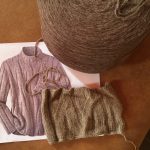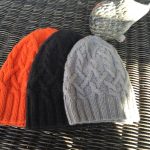* Angora yarn is a luxurious
and soft yarn that is
ideal for creating
warm and cozy
clothing items ~
Angora yarn is a type of yarn that is made from the fibers of the Angora rabbit. The fibers are soft, fluffy, and lightweight, making Angora yarn ideal for warm and cozy clothing, such as sweaters, scarves, and hats. Here is everything you need to know about Angora yarn:
Characteristics: Angora yarn is known for its softness, fluffiness, and warmth. It is often used in combination with other fibers, such as wool or silk, to add extra warmth and texture.
Production: Angora yarn is made by harvesting the soft, fluffy fur of the Angora rabbit. The fur is then spun into yarn using a spinning wheel or machine.
Colors: Angora yarn comes in a variety of colors, including white, black, brown, and grey. It can also be dyed in a wide range of colors.
Care: Angora yarn requires gentle care to maintain its softness and fluffiness. It should be hand-washed in cool water with a mild detergent and laid flat to dry.
Sustainability: Some animal rights activists have raised concerns about the use of Angora fur in yarn production, as some Angora rabbits have been subjected to cruel treatment in the past. However, many ethical yarn producers now use humane and sustainable practices when harvesting Angora fur.
Cost: Angora yarn is often more expensive than other types of yarn due to the cost of harvesting and processing the Angora rabbit fur.
Angora yarn is a luxurious and soft yarn that is ideal for creating warm and cozy clothing items. However, it is important to choose ethical and sustainable yarn producers to ensure that the Angora rabbits are treated with care and respect.


Here are some additional details about angora yarn:
More facts

Production process
Angora yarn is produced by harvesting the fur from Angora rabbits. The rabbits are typically groomed every 3-4 months to remove their loose fur, which is then collected and spun into yarn.
The collected fur is first cleaned and de-haired, separating the soft undercoat from the coarser outer guard hairs. The undercoat is then carded, which aligns the fibers and removes any remaining debris.
Finally, the carded fibers are spun into yarn using a spinning wheel or machine, creating a soft, fluffy, and warm yarn.












